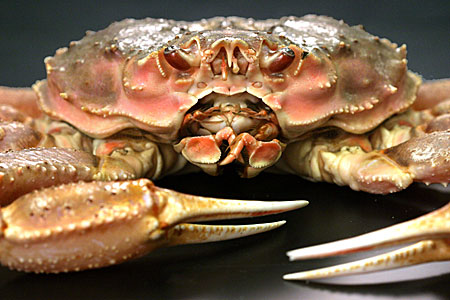Tanner Crab: A Comprehensive Guide

Tanner crab, also known as Chionoecetes, is a type of crab found in cold ocean waters around the world. Renowned for its sweet, delicate meat, Tanner crab is a prized delicacy in various cuisines and is often featured in gourmet seafood dishes. In this article, we delve into the fascinating world of Tanner crab, exploring its habitat, biology, culinary significance, and more.
Habitat and Distribution:
Tanner crab is primarily found in the cold waters of the North Pacific Ocean, including the Bering Sea, Gulf of Alaska, and the waters off the coast of Canada and Russia. These crabs inhabit sandy or muddy seabeds at depths ranging from shallow coastal waters to depths exceeding 2,000 feet.
Physical Characteristics:
Tanner crabs are characterized by their oval-shaped bodies, long spindly legs, and distinctive reddish-brown or orange coloration. They have a hard exoskeleton that protects their soft internal organs and delicate meat. The claws of Tanner crabs are relatively small compared to other crab species, with the larger claw often used for feeding and the smaller claw for grasping.
Life Cycle and Reproduction:
Tanner crabs undergo a complex life cycle that begins with larvae hatching from eggs laid by female crabs. These larvae drift in the ocean currents before settling to the ocean floor and metamorphosing into juvenile crabs. As they grow, Tanner crabs molt their exoskeletons periodically to accommodate their increasing size. Mature Tanner crabs reach reproductive age within a few years and participate in annual mating migrations to shallow coastal waters.
Culinary Significance:
Tanner crab is highly valued for its sweet, tender meat, which is rich in flavor and prized by seafood enthusiasts. The meat can be harvested from the body, legs, and claws of the crab and is often served as a delicacy in upscale restaurants and seafood markets. Tanner crab meat is versatile and can be used in various dishes, including crab cakes, salads, soups, and pasta.
Sustainable Harvesting Practices:
Due to their popularity and economic value, Tanner crabs are subject to regulated harvesting practices to ensure the sustainability of crab populations and minimize environmental impact. Fisheries management authorities enforce quotas, size limits, and seasonal closures to prevent overfishing and promote the long-term health of Tanner crab stocks. By adhering to sustainable harvesting practices, fishermen and seafood consumers can support the conservation of Tanner crab populations for future generations.
Tanner crab is a fascinating species with a rich culinary heritage and ecological significance. From its habitat and physical characteristics to its life cycle and culinary uses, Tanner crab offers a wealth of insights into the diverse world of marine life. By understanding and appreciating the biology, habitat, and sustainable harvesting practices associated with Tanner crab, we can enjoy this delectable seafood delicacy responsibly and sustainably.
Shedding Light on Tanner Crabs: Clawesome Facts and Figures
- Deep Dwellers: Tanner crabs can brave the chilly depths, living anywhere from 60 to over 3,000 feet below the surface!
- Speedy Breeders: A single female Tanner crab can release millions of eggs at a time, ensuring the continuation of their populations.
- Molting Mania: Like other crustaceans, Tanner crabs shed their exoskeletons as they grow, leaving them vulnerable for a short period until their new shell hardens.
- Migration Masters: Some Tanner crab species undertake impressive seasonal migrations, traveling hundreds of miles to reach breeding grounds.
- Foodie Find: A pound of Tanner crab legs can fetch a high price due to their delicate flavor and increasing demand.
- Sustainable Choice: Responsible fishery management practices like quotas and size restrictions help protect Tanner crab populations for future generations.
- Global Craze: Tanner crab meat is enjoyed worldwide, from creamy crab bisques in France to sushi rolls in Japan.




